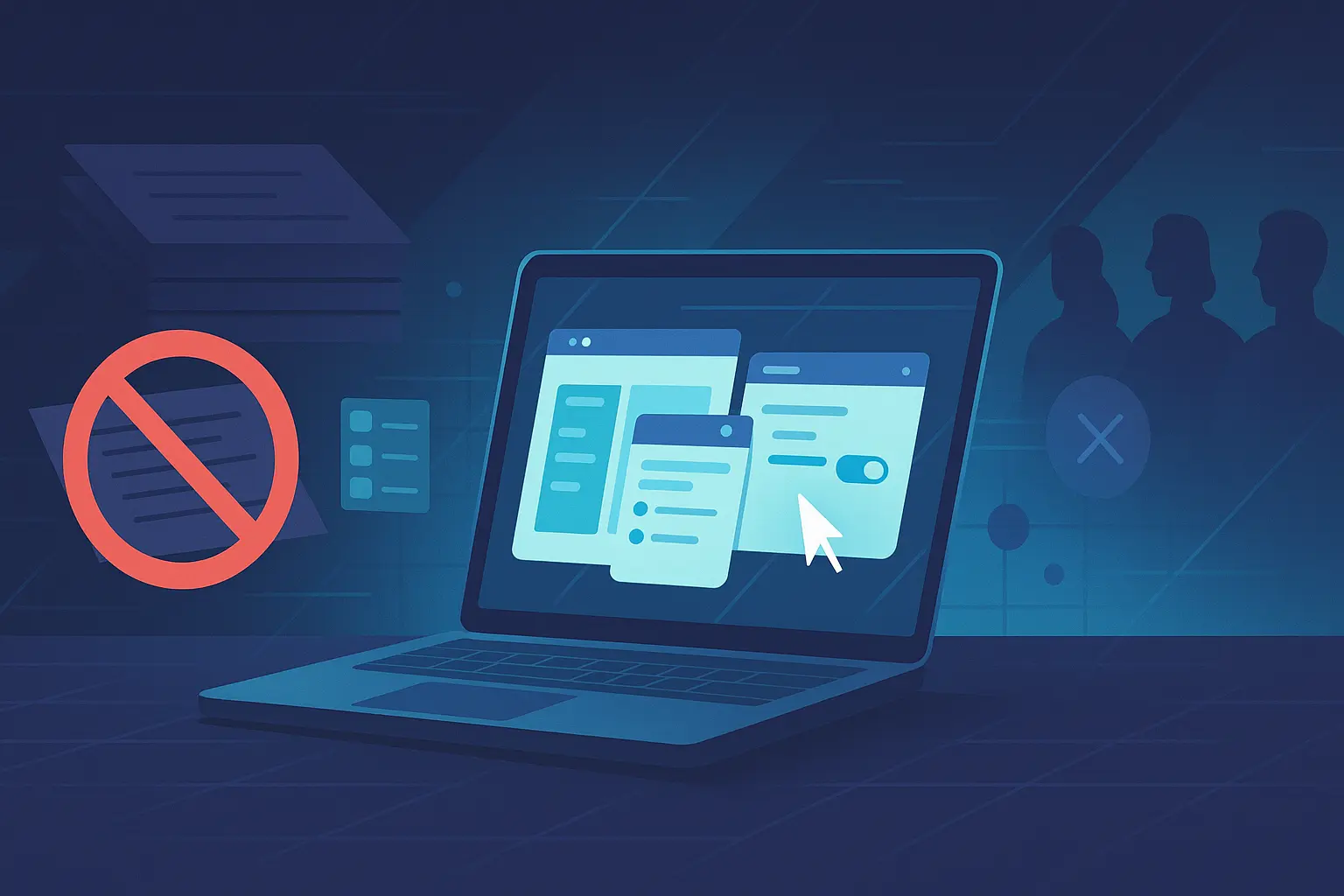Agile for Stakeholders — Demos, Not Decks
Skip status slides. Use working software to align, decide, and accelerate delivery. Here’s a pragmatic playbook for stakeholder demos that actually move the roadmap.

If you want momentum, stop presenting about the work and start showing the work. Stakeholder time is scarce. A crisp demo creates shared reality, forces clear decisions, and reduces rework. This post gives you a lightweight demo format, a readiness checklist, and templates you can ship this week.
Outcome: Replace status meetings with demos that drive decisions, reveal risks early, and speed up value delivery.
Why demos beat decks
- Shared reality: Everyone sees the same thing—no translation layer, no PDF drift.
- Faster decisions: Concrete options beat abstract arguments; you can choose now.
- Earlier risk discovery: Edge cases, latency, and UX friction show up on screen.
- Signals that matter: A demo proves working software and a healthy delivery cadence.
Deck anti-patterns to avoid: traffic-light theater, vanity screenshots, “future state” mockups with no plan, and vague asks (“thoughts?”). You’re not selling a vision; you’re aligning on the next shippable slice.
The 30-minute run of show
Time-box to protect attention and create urgency.
- Context (2 min): Goal of the slice, user/job, hypothesis for value.
- Narrated demo (10 min): One user journey end-to-end. Show data changes and system behavior—not just screens.
- Metrics & risks (5 min): What improved or regressed? Performance, accessibility, error states, operational notes.
- Decisions & trade-offs (8 min): Present two or three concrete options with impact on scope, sequence, and quality bar.
- Next steps (5 min): Confirm decisions, acceptance criteria for the next sprint, owners, and due dates.
Tips for the narrated demo
- Start from a fresh user or clean test account with realistic data.
- Show one edge case on purpose (e.g., failed payment, rate limit) to surface risks.
- Keep narration tight: what we changed → why it matters → what we learned.
- If something breaks, say so. Show the log, trace, or test, and note the follow-up.
Decision-driving, not show-and-tell
Go in knowing exactly what you need from the room. Frame decisions in plain language and show clear consequences.
Example decision grid:
| Option | What you get | Impact on timeline | Impact on risk |
|---|---|---|---|
| A: Ship now | Core flow, basic retries | No change | Medium (monitor) |
| B: Add polish | Error states localized, a11y fixes | +1 sprint | Low |
| C: Expand scope | Extra channel + admin report | +2 sprints | Medium–High |
After the choice, restate acceptance criteria in one line: “For Option B, we will localize error states (EN/ES), meet WCAG AA on key views, and ship in one sprint.”
Demo readiness checklist
- A stable environment and feature flag to fall back if needed
- Realistic seed data (no “Lorem ipsum”) and safe accounts
- Observability visible on screen (logs, metrics, or traces)
- Clear “ask” slide or doc with decisions needed and options
- Recording policy confirmed (privacy/security)
- Backup plan: short video or screenshots if the environment fails
Make it measurable
Tie the slice to something you can track weekly, not quarterly.
- User outcomes: completion rate, drop-off point, time on task
- Quality: P95 latency, error rate, accessibility checks
- Flow: lead time for change, deployment frequency, change failure rate
You don’t need perfect data; you need directional signals and the mechanism to improve them.
Handling tough rooms
- Pre-wire key stakeholders: Share a two-paragraph pre-read and your decision asks one day earlier.
- Manage scope creep live: Capture ideas to a next backlog column; commit to sizing later.
- Use the ladder of feedback: clarify → value → concerns → suggestions. Keep it respectful and time-boxed.
What to send instead of slides
Replace the deck with a one-pager that people will actually read:
- Context: goal, user, hypothesis
- Changes since last demo: bullets with links to PRs/tickets
- Decisions needed: options table + recommendation
- Risks & mitigations: top three
- Links: demo recording, PRs, issue board, runbook
👉 Grab our lightweight demo notes template to copy into your tool of choice.
FAQ
Do we still need a roadmap? Yes. Demos don’t replace roadmaps; they de-risk them. Use demos to validate slices and adjust sequencing.
What if it’s not demo-able yet? Demo the riskiest assumption: the algorithm on a small dataset, the integration returning a token, the edge case design in a prototype. Show the learning loop, not just the final UI.
How often should we run demos? Every sprint. If you’re not ready to show end-to-end, show a trace, terminal output, or a behind-the-scenes improvement (e.g., caching, observability) with before/after impact.
From idea to production—without the drama. If you want help turning status meetings into decision-driving demos, get expert guidance or start a pilot.